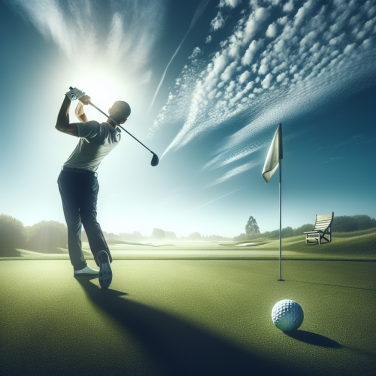Understanding the Key Differences between Various Golf Balls
When it comes to choosing the right golf ball, one thing is undeniable: not all golf balls are created equal. There are key differences in the various balls available on the market that can dramatically impact your game and performance. Here, we delve into these disparities to help you make the most informed decision about your golf ball selection.
The first thing you should consider is the type of golf ball. There are generally two types: recreational and advanced.
Recreational balls, often referred to as “distance balls,” are perfect for players with a swing speed of less than 80 mph. They have a hardcover that reduces spin on long shots, enabling the ball to travel further distances. This feature makes them perfect for beginners and high-handicap players who appreciate a few extra yards on their drives and wouldn't mind the occasional help with a wayward shot.
On the other hand, advanced balls are designed for more experienced players with higher swing speeds. They are typically characterized by softer covers that allow them to spin more. These balls provide greater control, allowing players to shape their shots better, especially on short game shots.
The materials used to construct a golf ball also play a significant role in its performance. There are three main types: two-piece, three-piece, four-piece, and five-piece balls.
Two-piece balls, which are typically recreational, consist of a solid core and a cover. They are designed to maximize distance, but this can often be at the expense of control and feel.
Three-piece balls are made up of a solid rubber or liquid core, another layer of enhanced rubber or a liquid-produced layer and then a molded cover. These balls provide more spin and control than their two-piece counterparts, making them suited for intermediate-level players.
Four and five-piece balls are usually advanced types made up of multiple layers, each with a different intended purpose. The extra layers allow for different spin rates based on the impact strength, leading to enhanced control over distances. These types of balls are particularly favored by professional and low-handicap golfers due to their higher performance specs.
Finally, the compression of the golf ball is another essential factor to consider. It refers to the hardness of the ball, with low compression balls being softer and high compression balls being harder. Low compression balls are ideal for players with slower swing speeds, as they can compress the ball at impact and take advantage of the resultant energy transfer.
Read also:
Understanding the Beautiful Game: An In-depth Guide on How Soccer is Played
Choosing the Best Golf Ball: Factors to Consider
Golf balls may look similar in appearance, but they have different construction and technology that significantly affects their performance on the golf course. Several factors should be considered when choosing the best golf ball.
One of the first elements to consider is your swing speed. Golfers with slower swing speeds might benefit from a low-compression ball. This type of ball compresses more easily upon impact, enabling it to travel further distances. On the other hand, a player with a faster swing speed will likely achieve better results with a high-compression ball, which will result in greater control and distance.
The type of golf ball cover is another essential factor to consider. Usually, golf ball covers are made from urethane or Surlyn. Urethane covers are preferred by professional golfers because they provide a softer feel and greater spin control, which helps in executing more precise shots. Conversely, Surlyn-covered balls are inexpensive, durable, and provide less spin, making them an excellent choice for high-handicap and casual golfers.
The construction of the golf ball is another critical factor. Two-piece balls, which have a large, solid inner core and a hard cover, are designed for maximum distance and durability. These balls are ideal for beginners or high-handicap golfers who are looking for more distance. The three-piece or multi-layer balls provide more spin control and feel and will suit the game of a low-handicap or professional golfer looking to shape shots and control the ball on and around the green.
The dimple pattern and design on a golf ball play a critical role in determining its trajectory and aerodynamics. Different dimple configurations can promote different launch angles and spin rates, affecting the distance and trajectory of the shot. While the technical details of dimple patterns may be less crucial for amateur players, they can notably affect a professional player's game.
A golfer's playing style and the playing conditions also affect the choice of the golf ball. Some players may prefer a ball with a softer feel for better control on the greens, as opposed to a harder ball that emphasizes distance. Playing conditions such as weather, course layout, and windy situations should also be considered when selecting a ball.
Lastly, pricing is a significant consideration. Premium golf balls with advanced features usually have higher prices than standard or distance balls. It can be useful for players to determine their preference in terms of playing characteristics and establish a budget they are willing to spend per dozen.




